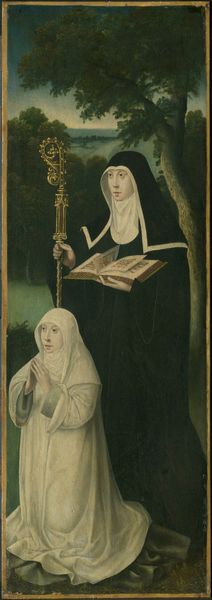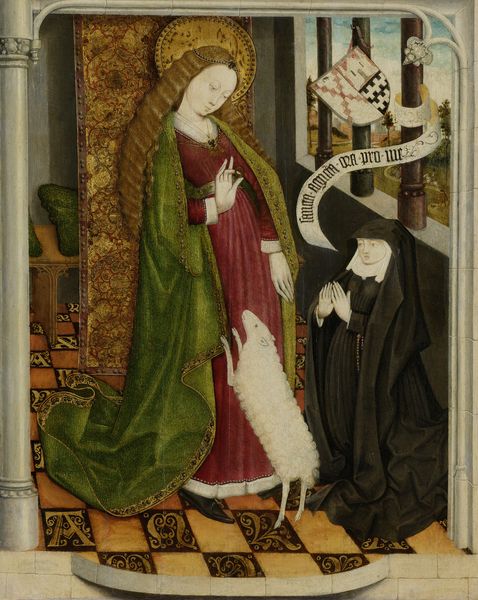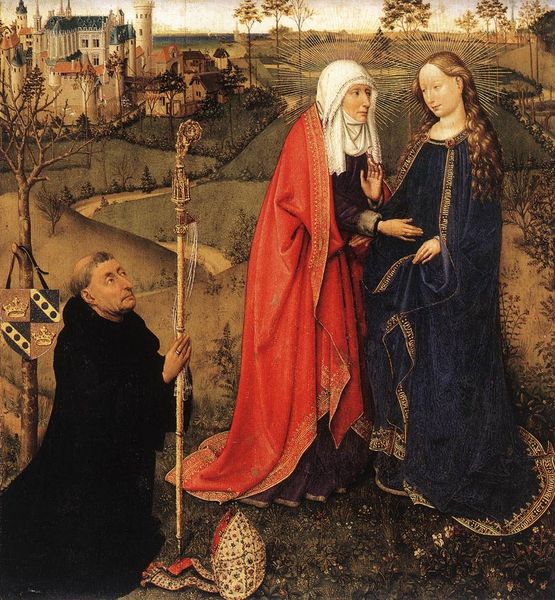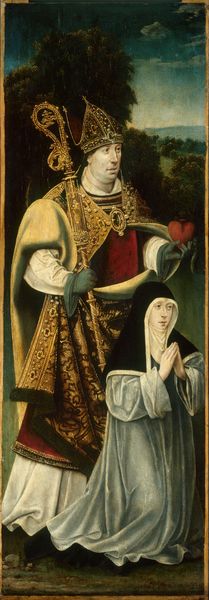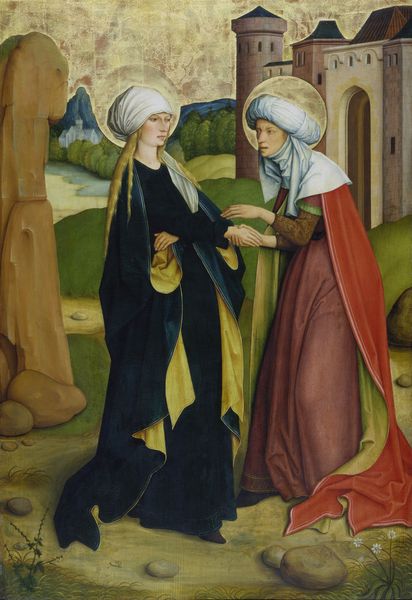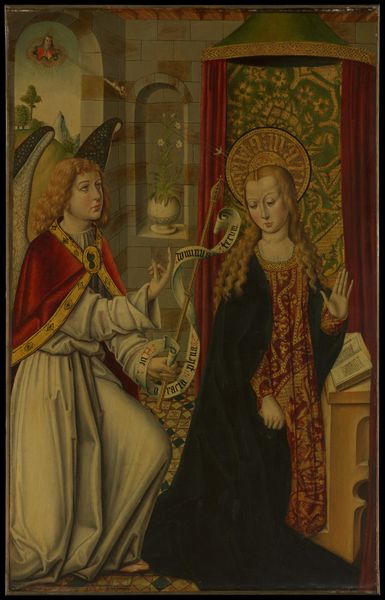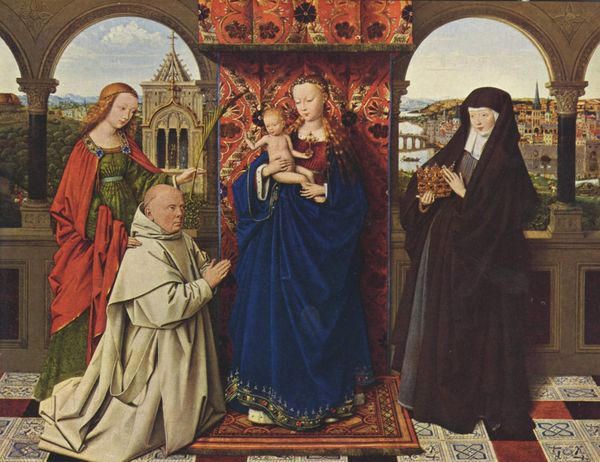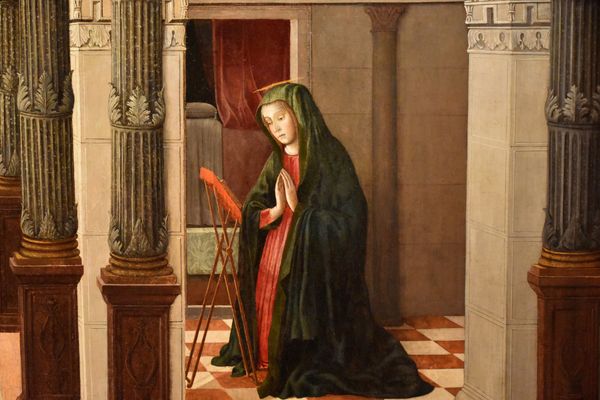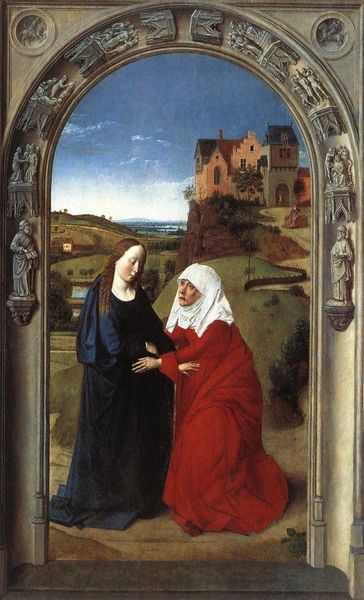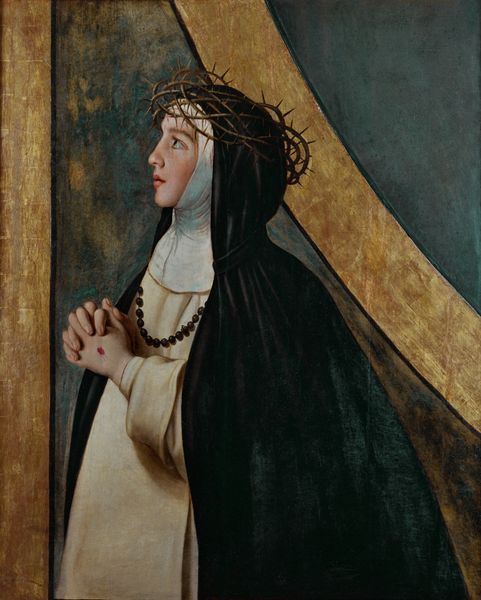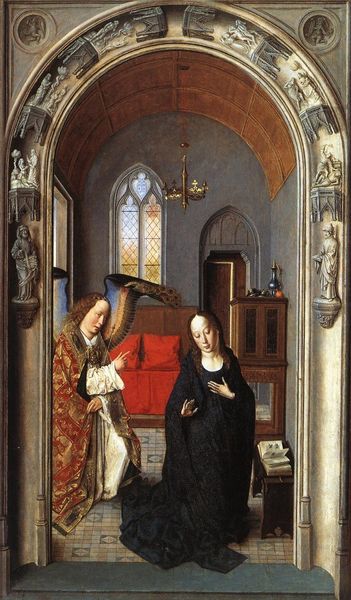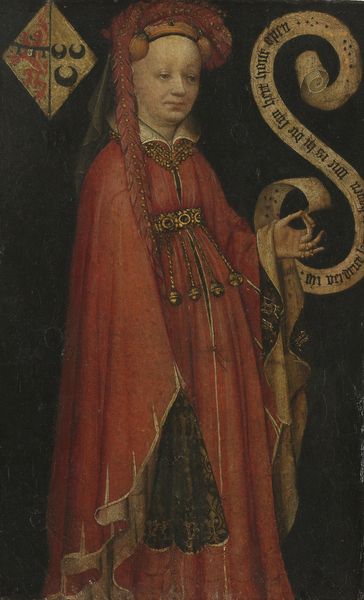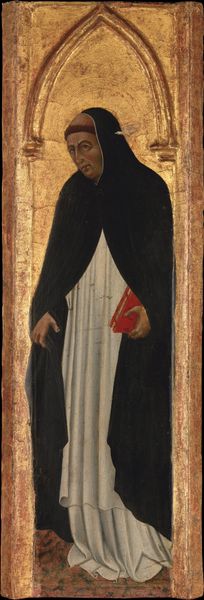
painting, oil-paint
#
portrait
#
allegory
#
painting
#
oil-paint
#
figuration
#
oil painting
#
history-painting
#
northern-renaissance
Dimensions: support height 69.7 cm, support width 28 cm
Copyright: Rijks Museum: Open Domain
Editor: Here we have Aertgen Claesz. van Leyden's "The Raising of Lazarus," painted around 1530 to 1535 using oil paints. There's something strikingly melancholic about the kneeling figure draped in black, while the other woman, adorned and bearing a sword, emanates a sort of formidable presence. How do you interpret this work? Curator: It's a compelling juxtaposition, isn't it? The image certainly reflects the socio-political tensions of the time, particularly concerning religious authority. Consider the historical context: this work emerges during the Reformation. Who do you think the woman with the sword represents and what could that say about Dutch society during the 16th century? Editor: Given the historical setting, could she perhaps symbolize Justice or perhaps even a temporal authority, like a ruling noble, in contrast to the religious piety suggested by the kneeling woman? The contrast is stark. Curator: Precisely. The Northern Renaissance was rife with these visual dialogues about power and faith. The sword emphasizes temporal jurisdiction and potential control, while the mourning woman hints at an established faith possibly challenged. We must also remember the public function of paintings. Who was its intended audience and what meaning would they likely ascribe to this depiction? Editor: I guess this contrast reflects a societal debate unfolding. So the artist presents not just a biblical scene, but also uses it as a stage to talk about current cultural struggles, right? Curator: Precisely! The artist makes what might be an assertion about a cultural argument of authority between traditional religious observance and potentially emerging secular powers. Van Leyden captures how early modern Dutch painting became a vital tool to both propagate ideas and dissect cultural anxieties. What would you say you learned today? Editor: It's incredible to consider the layers of social and political messaging that could be embedded in what seems, on the surface, like a simple biblical scene! It's shown me how crucial the context of a painting’s creation truly is. Thank you!
Comments
rijksmuseum about 2 years ago
⋮
This triptych was painted to commemorate a married couple, the man and woman shown kneeling on the wings. The central panel appropriately depicts the miracle of Christ raising Lazarus from the dead, an allusion to the promise of eternal life and the belief that death is overcome through faith in Christ.
Join the conversation
Join millions of artists and users on Artera today and experience the ultimate creative platform.
